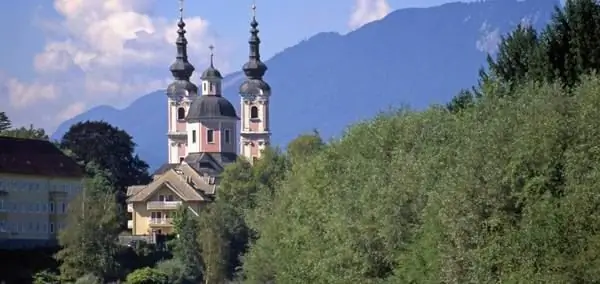
Description of the attraction
The Baroque Church of the Holy Cross with two high towers flanking the main portal and one lower octagonal tower was built along the Drava River. The predecessor of this church was the Church of St. Peter, erected in the 8th century. The original church was located much closer to the river. Until our time, the church of St. Peter has not survived. In the 18th century, a legend about a miraculous crucifixion appeared in Villach, which was on the wall of one of the buildings located in the area of St. Peter's Church. Pilgrims flocked here. Local believers obtained permission from the bishop to build a new church here.
The Church of the Holy Cross was erected in 1726-1738 according to the project of Hans Eder, a popular architect who, among other things, worked on the chapel in Wernberg Castle. The new sacral building was consecrated only in 1744. The Chapel of the Lord's Mercy was added to the church in 1771 and consecrated in 1774. The Church of the Holy Cross became a parish church in 1783. At the beginning of the next century, the old church of St. Peter was demolished.
The new church was built in the shape of a cross. Statues of saints are installed on its main facade in special niches. The towers contain three bells, the oldest of which was cast in 1728.
The interior of the temple is decorated with frescoes in the style of late expressionism. They were created in 1960 by the artist Fritz Frohlich.
The monumental altar was made in the second quarter of the 18th century. The statues on it and on the side altars were carved by Joseph Mayer. The ambo, decorated with images of four seated evangelists, dates from the third quarter of the 18th century.






